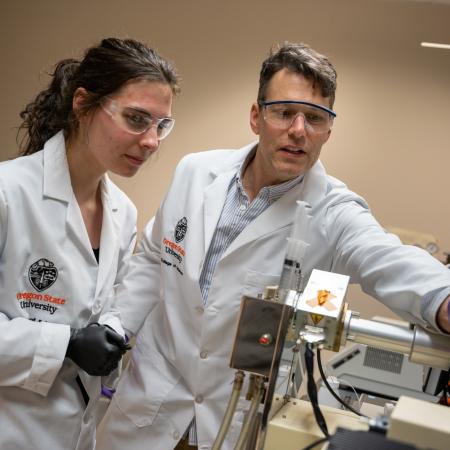Loading nanofiber sutures with vitamin D induces the production of an infection-fighting peptide, new research shows.
The discovery could represent an important advance in the prevention of surgical site infections, a multibillion-dollar challenge each year in the United States alone.
A collaboration that included Adrian Gombart, associate professor in biochemistry and biophysics used coaxial electrospinning deposition and rolling to fabricate sutures that contained 25-hydroxyvitamin D3 and the pam3CSK4 peptide.
A peptide is a compound consisting of two or more amino acids linked in a chain; pam3CSK4’s function is to activate a cell’s toll-like receptor, which in turn triggers immune responses, in which vitamin D plays a key role.
The research showed the sutures released 25D3 – the same form of the vitamin that’s measured in the blood when a patient’s vitamin D levels are tested – on a sustained basis over four weeks. The sutures released pam3CSK4 via an initial burst followed by a four-week prolonged release.
“When the toll-like receptor is activated, you induce a particular enzyme to convert 25D3 to its bioactive form, known as 1,25-dihydroxy vitamin D3, that activates the vitamin D receptor,” Gombart said. “When activity increases, that increases expression of vitamin D receptor target genes, one of which produces the LL-37 peptide, which kills microbes by disrupting their membranes.
“The idea is, if you were to have an infection, the sutures would activate the toll-like receptors and start increasing production of 1,25D3 from the 25D3 that’s being released from sutures – so you get both local induction and an increase in the production of the antimicrobial peptide.”
Findings were recently published in Nanomedicine.




